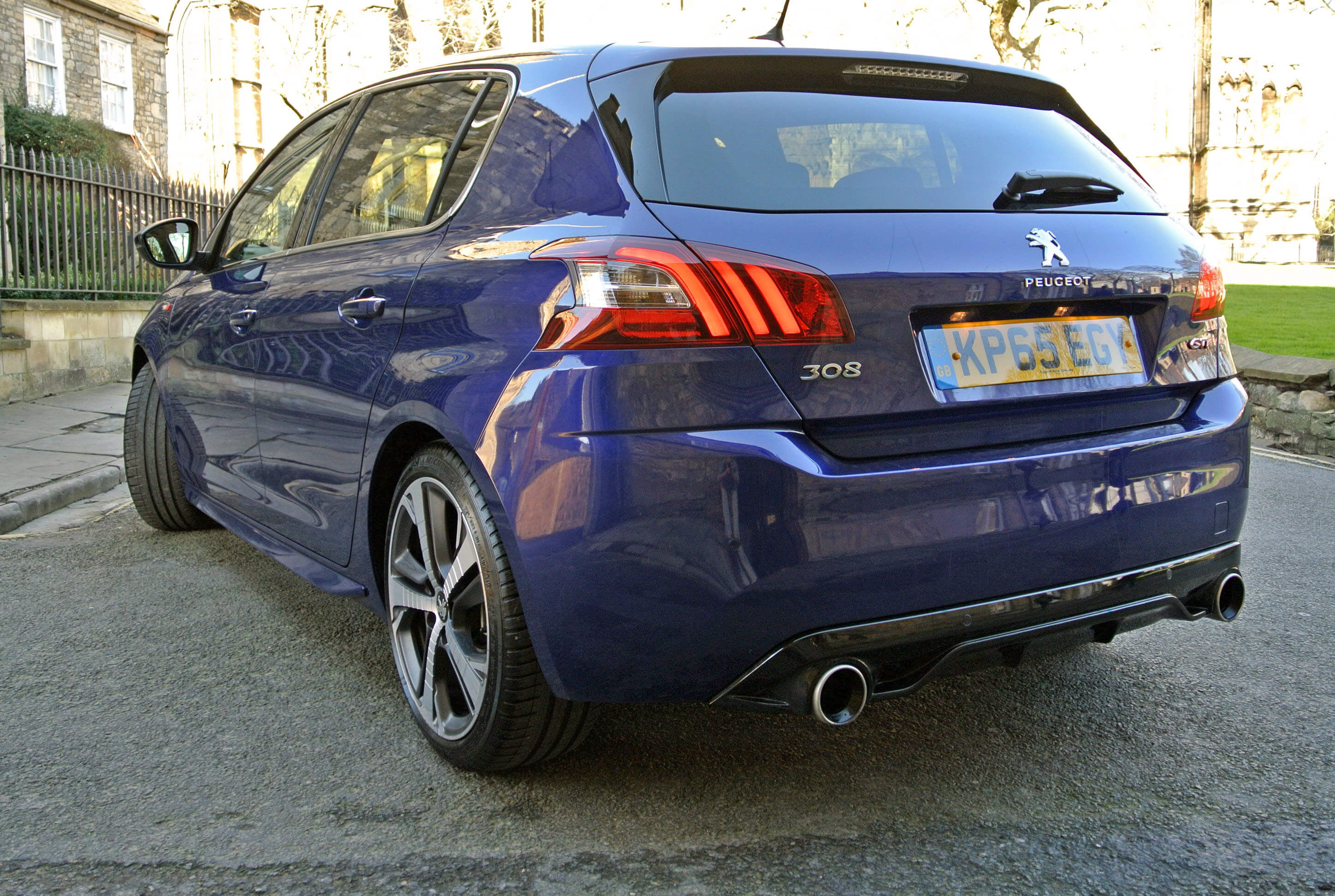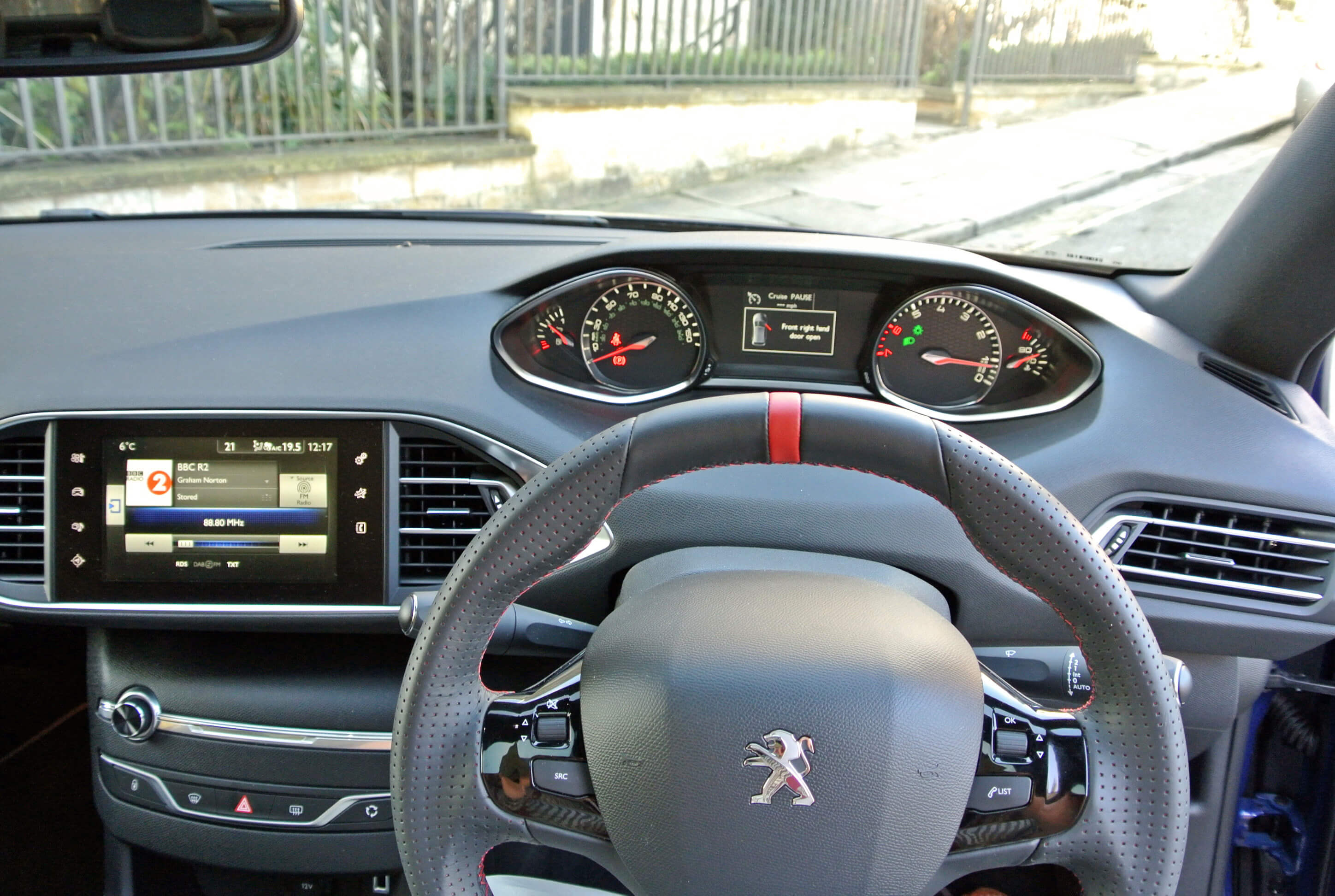While there is no denial of the relevance of the GTi badge that Peugeot offers the new car market, a pair of potency options means that Iain Robertson is forced into choosing the version that he believes is the better one.
Selecting chillies by their heat delivery on the Scoville Scale is complicated by their big number thermal intensities. Personally, I love the palate cleanliness of a Scotch Bonnet, most especially when served in Thai cuisine, although its overall rating, which is significantly higher than the relatively gentle Jalapeno, falls someway short of gullet blistering. On the other hand, the Trinidad Scorpion falls into ‘effing hell’ territory that no amount of standby milk will remedy and hospitalisation might be the only cure.
For what it is worth, Peugeot is reportedly building and developing a 308R Hybrid model, which, armed with 493bhp, is intended to set the hot hatch sector alight…as far as the 308 family line is concerned, it will be the Trinidadian alternative. In the meantime, the Scotch Bonnet versions are in either 250, or 270 forms, where the numbers refer to the continental horsepower rating of 250/270ps respectively (lop 3ps off either to result in the British comprehensible 247 and 267bhp versions), which create a dichotomy for the British car buyer.
In which one should I invest? Truth be known, neither, as ‘investment’ is hardly an effective descript for a fast-depreciating asset, weighing in at £26,555, or £28,155 respectively, when contrasted with what either version might be worth in three years’ time. Bear that in mind, when your head is wrestling with power outputs and potential driving pleasure, but your bank is rattling around its relative redline. You can almost guarantee that the residual figure will be hovering less than half but possibly more than a third of the original invoice value. Yikes!
We can move on, because there is nothing interesting to look at here. Whether any 308GTi buyer will feel inclined to slap some cash on the table is unlikely to be question, especially as most of the new car scene is being motivated by manufacturer-supported finance schemes that make some of the Fannie-Mae and Freddie-Mac shenanigans of the past decade look almost legal. It is ‘lease’ rates that will govern the success of the 308GTi, rest assured.
Yet, in terms of living costs, either 250, or 270, make a moderately viable proposition, thanks to fairly clean living. Both emit just 139g/km of CO2, which equates to Band E for taxation purposes and an annual VED fee of just £130, which is a low figure for a sporty car. Their Official Combined fuel economies are rated at 47.1mpg each. Okay. We know that these numbers are questionable but the 250 owner is more likely to achieve the 40.3mpg that I attained, than a lower figure induced by dipping into the 270’s potential. Again, it is a case of mind over matter and, while only a smidgen more rorty, the 270 will encourage slightly more brutish behaviour, by the ’boy-racer’ resident in many of us, and, thus, reduced frugality.
Is the £1,600 premium for the 270 worth it? Well, that user will receive an inch larger alloy wheels in a slightly better style, while gaining from the use of a Torsen limited-slip differential that will aid the car’s handling envelope, so it is hoped. The red-painted callipers squeezing larger diameter front disc brakes meet with market expectations and the half-hide/half-Alcantara sporty seats serve to hug the hips, where the stock offering is less focussed. Therefore, the answer is ‘Yes’ but it lies more in technology than enhanced visual appeal.
I have already decided that the 250 is by far the more attractive proposition. The 0.2 of a second 0-60mph blast difference is so negligible that most owners will never notice the advantage over the 250’s 5.9 seconds and the notional maximum velocity of 155mph that will only ever be of use on a limited number of German autobahns, being more than twice our legal limit, is unlikely ever to figure beyond pub-bred bravado games. It could be asked, ‘What’s the point?’ but, as I do not work for PSA marketing, I shall be unlikely to ever know, or find out truthfully.
Powering both models is the same 1.6-litre THP family engine, boosted by a turbocharger and some re-imagining of the engine management system. Fortunately, as long as you do not depress the ‘loud’ button (actually the Sport one), you will never be troubled by a ‘symposed’, through-the-stereo-speakers approximation of what a sporty engine used to sound like (just not externally, as that would be politically incorrect). You probably will not miss the change from white dial illumination to a scary red, which is distractingly annoying anyway. As far as employing a tighter rein on the car’s dynamic balance is concerned, perhaps it is my advancing years, or that I am not a product of the X-Box generation, that such incremental changes do not possess the appeal that they once used to.
Driven normally, the 308GTi is a charming and inoffensive machine. Its six-speed gearshift is delightfully efficient and wondrously snickety-snick in its selection, although the overall gearing of the car means that the engine can sound a little busy, when extended. Yet, that is not such a pain really, because the unit sounds pleasantly engaging and it can be fun to stretch the car’s legs, especially during overtakes, or when the horizon clears for long enough to allow you a decent full-throttle burst. Overall, it is singularly undemanding.
The chassis tweaks that qualify the GTi badge result in a pleasing amount of compliance, which means that mid-corner bumps do not upset progress and the car’s directional stability is superb. It rides well and absorbs most of the nastiest of ridges and ripples that exist on our roads network these days, levelling out markedly better at higher speeds, than when footling about town. Of course, the 18-inch alloy wheels are the better option in any case, being less susceptible to transmitting the road noise and drumming inherent to ultra-low profile tyres into the cabin’s interior, which happens to be a modestly satisfying place to reside. The 19s will lead to both teeth and bottom-clenching.
As an acknowledged critic of Peugeot’s design-first approach to the cockpit and the aspects of it that conflict with driver expectations, I can tell you that the tidgey steering wheel works far better in this model than any other 308. It meets with the dartier direction changes expected of a sporty model. However (and I do apologise, once again, for rearing the ugly aspects of the instrument architecture), the speedometer and rev-counter are on the wrong sides of their binnacle and are too far apart. The low positioning of the steering column does create a small compromise for my long legs and those of similarly leggy people. Yet, the seating position in this 308 is by far the best of all 308s, because the runners are set lower and the driver’s seat is constructed in a sportier vein.
Although I love the largely clear centre console and the lack of visible switches, as most controls are reserved for the touch-screen in the upper-middle of the dashboard, the age-old chestnut of a glove-box that is only suitable for gloves but little else, mainly because it is more than half-full of fuse-board, remains a factor that Peugeot should have remedied by now, as it has been barracked endlessly (not just by me) for the shortage of interior storage spaces. The door pockets are generous, while the central cubby/armrest supplements them.
The view outwards is excellent and the full-length, glazed roof section, which can be sun-blocked with its electrically operated blind, ensures that the cabin is an airy and pleasant environment. Rear seat occupants will suffer a touch, behind taller front seat occupants but the boot is class-leadingly large.
In my book, the only 308GTi worthy of living with is the 250. I would not waste my money on the 270. While the test car was a lovely shade of blue, there is a different ‘Coupe Franche’ red/black paint scheme that can be applied at extra cost (it prices the 270 model well over £30k), although I would not recommend it, especially if subtlety is your calling card. Despite what you might think, I actually enjoyed driving the 308GTi and I found its performance and handling to be just the right side of ‘crisp’. Obtain the right finance package and the Peugeot makes a good option over the boring VW Golf GTi, the not-quite-right Kia c’eed GT, the moderate but flimsy Ford ST and the flatulent and ill-judged Renaultsport Megane.



